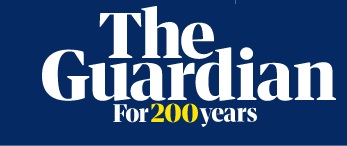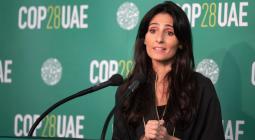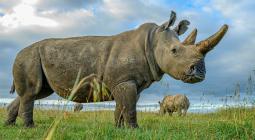What raising an orphaned owl taught me about our broken bond with nature

“What kind of bird is this?” The text from my wildlife rehabilitator friend had asked. I had to squint at the photo. Was this a dirty rag? No, a nestling. In very bad shape. A screech owl. Found dragged and dropped on someone’s lawn. I figured she was about two weeks from being old enough to fly.
Cleaned and warmed by the rehabber, the tiny owl survived. Together we planned a “soft release”. The idea was that as she gained the ability to fly we’d let the young owl wander off rather naturally, on her own schedule, into the very suitable woodland behind our home. So her care came to us for what we thought would be a few weeks at most. Online, I found a source of food – frozen mice – and “she” began to thrive (we would not know her gender till much later). We called her Alfie.
Her first set of juvenile feathers began growing in beautifully. But, perhaps because she had nearly died of hunger and dehydration, most of the long flight feathers on her wings did not appear. When she should have been able to fly, Alfie could only hop around.
So, I put Alfie in protective custody in our screened chicken coop. When she moulted, her first adult feathers came in perfectly – but by then winter was in the air, making easy food such as large insects suddenly scarcer, and she had never learned to hunt. I would not risk letting her loose and having her starve.
-
Alfie in her first summer, with juvenile feathers, compared to her in full fine plumage as an adult
The next spring I started flight and hunting training, letting her catch a fake mouse on a string. By then, I’d grown extremely fond of Alfie and was amazed by her responsiveness and ability to relate to us, seek our company, and enjoy a little physical affection. Humans, of course, have differing temperaments, and people who know dogs or cats take personality differences for granted.
Yet, we assume all wild creatures are interchangeable – mainly because we don’t know any actual wild creatures. Alfie was not simply “an owl”. Our history together created a relationship. Trust became a bridge across which she and I, and my wife, Patricia, shuttled.
So I feared for her safety. But if Alfie was to have a chance at the life she was born to live, we both had to face the risks of her freedom. When summer was again at its fullest, I left the door open. Alfie vanished without a trace.
-
Alfie enjoys her newfound freedom in the outdoors
A week later, Patricia texted me at 11pm: “Guess who’s back.” After that, Alfie decided to centre her territory around our back yard. Before long, we started seeing another owl. Alfie had a plus-one, a suitor.
But right around the time that Alfie was finding new freedom of movement, the human world was losing it. A few months after her release, on New Year’s Eve, the Chinese government announced a “pneumonia of unknown cause” in Wuhan. Then, as the Guardian told us: “Over the next 100 days, the virus would freeze international travel, extinguish economic activity and confine half of humanity to their homes.”
Our calendar went blank. We had nothing better to do than sit in our backyard and watch owls. Meanwhile, the headlines gave us photos of wildlife taking to the depopulated city streets, lawns and tourist spots. Many people around the world were discovering a closer focus, finding some solace from the awfulness of Covid in gardens, parks and birdsong.
-
Carl Safina and Alfie: after being hand-reared, Alfie had no fear of her human companions, allowing them to experience owl life up close
Most days, I’d get up before dawn and watch owl doings for two or three hours, and do the same around sunset. Alfie gave me an unmatched view of owl life. I could walk around, follow, sit in the open – she didn’t care. The wild male in her life was the one who had her attention.
Male suitors impress by “courtship feeding”. He’d take a few minutes to catch something, usually a moth, while she waited on a branch by the nest box I’d placed on the outside wall of my writing studio.
But Alfie was tentative at first, refusing most of his gifts, or taking them half-heartedly. Eventually, she got comfortable, anticipating his arrival. Soon enough, I was elated to discover that Alfie was incubating three eggs.
-
After some time living outside, Alfie acquired a romantic interest – and produced her first clutch of eggs
I was seeing the nuance of a bonding process. First, I’d cared about her physical disability. Now I was seeing her emotional capability. But why did this surprise me? Why are we usually blind to the living world that made us possible? Watching Alfie was blurring the usual boundaries that western philosophy had erected between humans and nature.
In many belief systems the most holy and important things are of this world; in the western dualist perspective the world is often regarded as the least holy, least important thing. This devaluation of the world has seeped through the Industrial Revolution into the modern global economic system.
-
Alfie’s three owlets – pictured in the first image at just 17 days old – grew up healthy
All human-created systems deliver on the values that prompted them. The systems that support modern life depend on creating damage to the living world.
Mass extinctions, climate breakdown, toxins and pollution; these are now sometimes referred to collectively as “the multi-crisis”. After summers of blanketing smoke from thousands of devastating wildfires on various continents, have we done anything to change our tune?
-
Even after her release, Alfie remained close to home, and continued to spend time with her human rescuers
Preventing the living world’s destruction – and our own – would entail a willingness to value other-than-human life. Human dignity will depend on that re-valuation. Trees, not tech, constitute the fastest and least expensive route to stabilise Earth’s climate system.
Alfie became the owl she was born to be when she left our protection for the risks and rewards of free agency. She is who she is by the chance happenings of her life and by learning to exploit the details of her local landscape while avoiding the loose cats, hawks and other hazards. She and her mate raised three young ones that first year, forging new links in the great chain that has gone unbroken – so far – for many millions of owl generations.
-
One of Alfie’s chicks climbs a tree outside the Safina home
Alfie lives in relationship, and our surprising capacity to relate to one another expanded my perspective on her life and mine. Birds and humans have not had a common ancestor for 300m years. Yet, Alfie always enjoyed a little head scratch that we enjoyed giving. Our nervous systems still relate, allowing us to share such pleasures. People for many thousands of years lived in relationship with nature and with their communities. If there is one lesson from traditional and Indigenous cultures – and from Alfie – it is that to live in relationship is how we might heal.
Now five years old, Alfie has brought 10 young owls into the world so far. She is fully herself in the world – a task that remains a work in progress for me.
-
Carl Safina is an ecologist and writer. His new book – Alfie & Me: What Owls Know, What Humans Believe – partially excerpted here, is published by W.W. Norton








